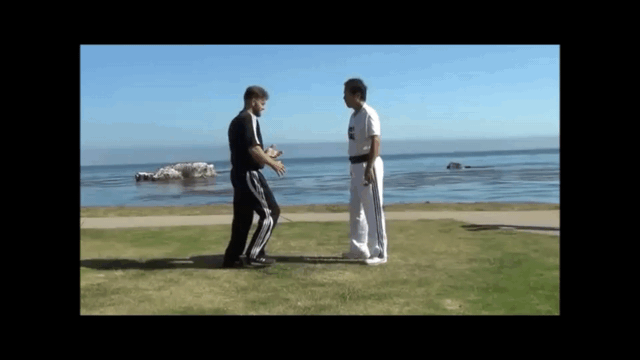In theory, to be inside will give you more advantage than to be outside.Being physically smaller than most I much preferred getting inside and tight.
- To be inside, you can "expand".
- To be outside, you can "squeeze".
The problem may happen when your opponent's "squeeze" force is more powerful than your 'expand" force.

